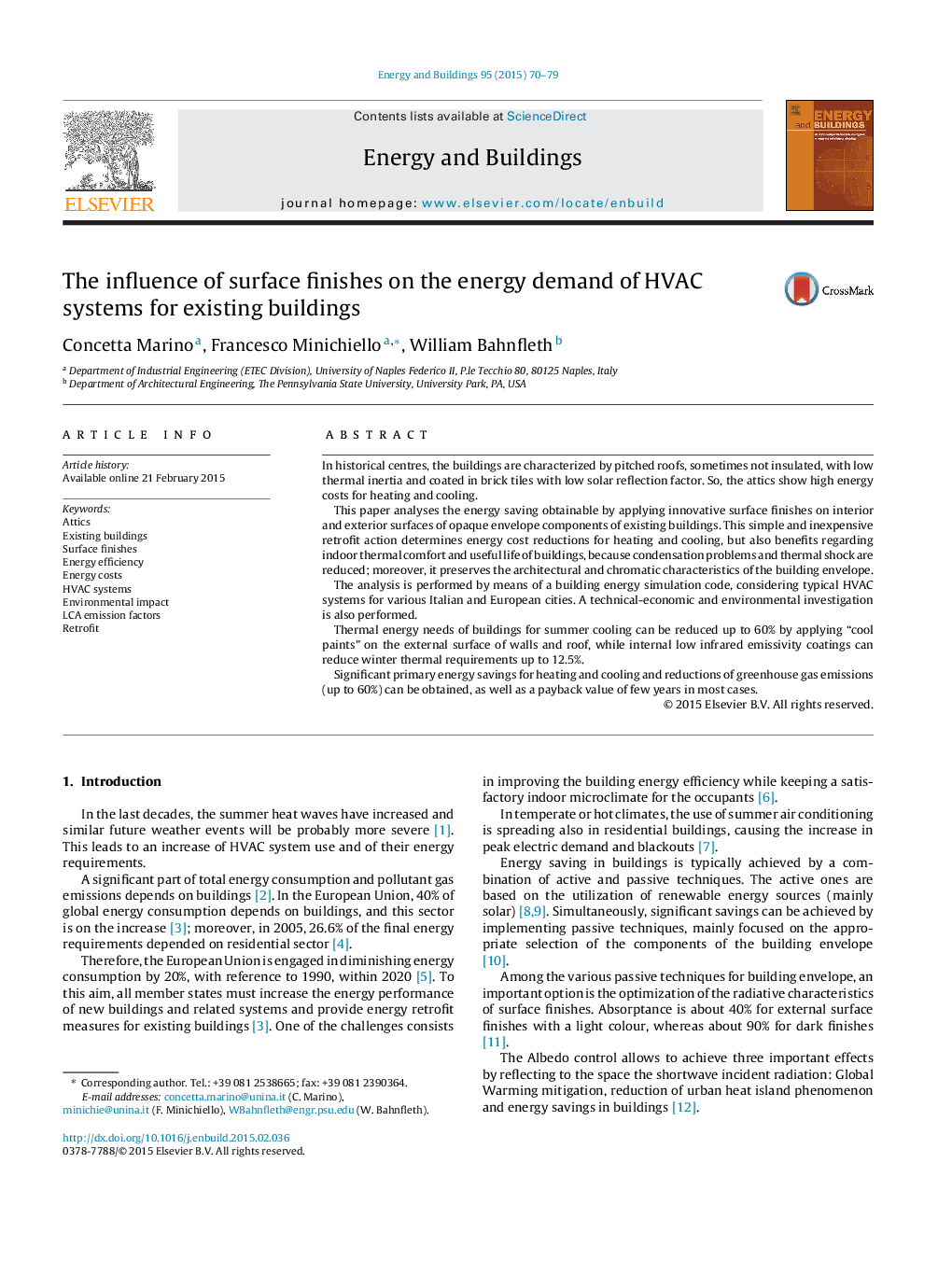| Article ID | Journal | Published Year | Pages | File Type |
|---|---|---|---|---|
| 262580 | Energy and Buildings | 2015 | 10 Pages |
•Summer building energy needs are reduced up to 60% by applying external cool paint.•In winter, low emissivity internal coatings reduce thermal needs up to 12.5%.•Innovative finishes reduce the yearly building energy needs up to 20.4%.•Yearly savings of primary energy up to 18.4% can be obtained.•Discounted payback less than 10 years in many cases when considering tax deduction.
In historical centres, the buildings are characterized by pitched roofs, sometimes not insulated, with low thermal inertia and coated in brick tiles with low solar reflection factor. So, the attics show high energy costs for heating and cooling.This paper analyses the energy saving obtainable by applying innovative surface finishes on interior and exterior surfaces of opaque envelope components of existing buildings. This simple and inexpensive retrofit action determines energy cost reductions for heating and cooling, but also benefits regarding indoor thermal comfort and useful life of buildings, because condensation problems and thermal shock are reduced; moreover, it preserves the architectural and chromatic characteristics of the building envelope.The analysis is performed by means of a building energy simulation code, considering typical HVAC systems for various Italian and European cities. A technical-economic and environmental investigation is also performed.Thermal energy needs of buildings for summer cooling can be reduced up to 60% by applying “cool paints” on the external surface of walls and roof, while internal low infrared emissivity coatings can reduce winter thermal requirements up to 12.5%.Significant primary energy savings for heating and cooling and reductions of greenhouse gas emissions (up to 60%) can be obtained, as well as a payback value of few years in most cases.
